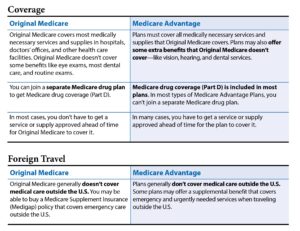Most of you know that what we pay for an investment is called its basis and what we sell an investment for is its realized gain or simply its gain. If we sell an investment at less than its basis, we produce a loss. Okay, simple enough, but what is tax-loss harvesting? It just means intentionally selling an investment at a loss to meet some tax objective. Tax-loss harvesting can actually be a bit tricky, but here are the basics.
Offsetting Gains
Suppose we need to sell some stock that has gained value. We will be subject to a tax on that gain. The tax will be at our ordinary income tax rate if we’ve owned the investment for less than a year. (That’s 24% for joint filers earning $95,376 to $182,100 for federal taxes and 4.55% for Colorado taxes.) Federal taxes are 15% for most of us if we’ve held the investment for a year or more. (The federal rate is 20% for people with earning around a half-million dollars or more.) Ouch, right? Well, this is where tax-loss harvesting can come to the rescue. You can use investment losses (from this year or from prior years) to offset your gain. Remember that taxes are only calculated on your net gain (total gains – total losses). This can save you a lot of money and is the big benefit of tax-loss harvesting.
Excess Losses
Suppose your losses exceed your gains? These excess losses can be used in two ways. First, they can be used to reduce your taxable earned income by up to $3,000 (for married couples filing separately, it’s $1,500). What if there are still unused losses? They can be carried forward and used to reduce capital gains in future years. And, there’s no expiration date!
An Example
Let’s just clarify all of this with an example. Suppose you sell some stocks and have a $50,000 gain. Suppose you also harvest $65,000 in losses. So, your taxable gains are ZERO! And, there is $15,000 in losses left over. Okay, let’s reduce our earned income by $3,000 (that’s worth $720 for someone in the 24% tax bracket). And we’re not done yet, we can carry the remaining $12,000 forward to reduce capital gains in future years for as long as it takes to use them up.
Common Reasons to Sell
If we don’t want any capital gains this year, why not just avoid selling an investment? Naturally the most common reason is that we need the money. Another common reason is that our portfolio has become significantly unbalanced (too much in real estate, not enough in technology, etc.). We need to sell stocks in one sector to free up the funds to invest in another sector.
The Fine Print
There are a number of important details here. In fact, it’s easy enough to make a mistake that a financial advisor should really be working with you on your strategy. Here are some of the more common things to consider.
- You can only harvest tax losses in non-retirement accounts. (Not in IRAs, 401(k)s, annuities, etc.)
- If you intend to reinvest the money you obtain from tax-loss harvesting, you must watch out for the IRS wash-sale rule. This basically says that you can’t reinvest in the things you sold for a loss (or in substantially identical things) for 30 days before the sale and for 30 days after the sale. If you do, then you can’t use these losses for tax purposes. (There are ways around this with EFTs and mutual funds, but they must be selected with an eye on the substantially-identical rule.)
- Short-term losses (investments owned for less than a year) must be applied against short-term gains and long-term losses must be applied against long-term gains. But, suppose your long-term losses exceed your long-term gains? Then it’s permissible to apply the remaining losses against your short-term gains. The converse is permitted too, but due to the tax structure, it’s normally better to carry excess short-term losses forward into a future year.
- It’s very common to harvest losses late in the year as you start thinking about taxes. But, there have been studies that show it’s often advantageous to harvest losses throughout the year. (Indeed, many brokerage firms have programs that can do this automatically on a daily basis.)
- It can be worthwhile to harvest losses even if you don’t have any gains you want to offset this year. If it’s a down year (in 2022, the Nasdaq is down almost 33% and the Dow is down over 20%), you may want to harvest some losses to help you in future years when you’ll have more gains to deal with.
You can probably see that tax-loss harvesting can be used to reduce your taxes and keep more money in your pocket. You can probably also see that loss harvesting must be done with care to avoid unintended consequences. We’d be pleased to review tax-loss harvesting for your particular situation, or go over any other financial matter, in a no-charge, no-obligation initial meeting. Please visit our website or give us a call at 970.419.8212 to set up an in-person or virtual meeting.
This article is for informational purposes only. This website does not provide tax or investment advice, nor is it an offer or solicitation of any kind to buy or sell any investment products. Please consult your tax or investment advisor for specific advice.






